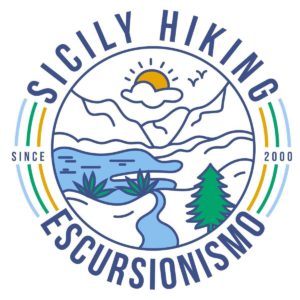A journey to discover our origins
The temple of the goddess of Love: Erice
An archaeological miracle: Mozia
The naval stronghold: Marsala
The ruins of the: Selinunte
The building of temples and the satyr: Mazara
The mystery of the Elimi: Segesta
Other towns and ports of Trapani
The imperial portraits of ancient Cossyra
The three portraits are not that the most representative of numerous finds of great value so far found on the acropolis of Cossyra that demonstrate the vitality of the settlement in Roman times.
This finding further confirms the great political and economic role of Pantelleria in Roman times. Between the first and second centuries d.C. Pantelleria became a cornerstone of the Roman presence in the Mediterranean.
The context of findings are not consistent.
The first two portraits, Parian marble, found together in a tank depicting Julius Caesar and a woman of the Julio-Claudian family, probably Antonia Minor. The archaeological context some time during the deposition of the third quarter of the century. d.C, in a time not long after the creation of portraits. It is evident that the portraits have been deposited with piety and covered by the remains of bloody sacrifices and libatori evidently made for the ceremonies that must have preceded “burial”. It is possible that the heads were removed from the building in which they were to be placed to make way for new characters on the occasion of the change between the dynastic Julio-Claudian and Flavian.
The third head was found in another tank and is one of the most successful portraits of the Emperor Titus, son of Vespasian, prominent figure of the Flavian dynasty. It was probably hidden in the tank during the sad days of the invasion vandalism, and the consequent cessation of the site. Although this portrait is perfectly preserved and originally was to be inserted into a statue.
VOICES FROM PREHISTORIC
There in the subsurface, deeper levels of the great cultures, lie unheard voices oldest, of which only rare or no extensive excavations have led to the resurfacing echo.
Remains of prehistoric villages, necropolises and quarries, here and there in the territory of Trapani, much frequented by mass tourism culture, will show, to those who seek them, in their nameless mystery.
In the territory of Partanna, eg, Strait in the district, a Neolithic site has traces of hydraulic works great for its time, leaving assume the presence of a considerable technical background; Here were brought to light vases, cups, cups, mugs, pitchers, pyxes of excellent workmanship and ornate geometrically, that are part of a collection kept at the Regional Archaeological Museum in Palermo.
In the whole area of the Lower Belice are out of deposits ranging from the Lower Paleolithic (in the municipalities of Salemi, in Santa Ninfa, Castelvetrano) Bronze Age (still in the territory of Castelvetrano): shelters “under rock”, necropolis, with pottery, weapons and stone tools, showing the evolution of ancient peoples who grafted on the size of Selinunte.
In the territory of Mazara del Vallo, on the right bank of the river Mazaro, in the district Miragghianu, is located, then, one of the most important tombs of the South, said of St. Bartholomew, or the Beati Paoli, with the remains of a catacomb, a chapel and traces of paint on the walls anthropomorphic motifs. It is, however, always hidden sites in open countryside, sometimes difficult to access among the secrets of nature changing through vegetation, gradients, signs of human settlement, lace between steep and streams, they deserve the establishment of genuine archaeological tour organized. Sea, mountain, campaign: travel between the great cultures that inhabited this territory touches the last landing on the islands of the Island: Pantelleria and Levanzo.
The largest of the islands around Sicily, Pantelleria, volcanic, retains many traces of an ancient Neolithic population. Of a prehistoric settlement, traces of the fortifications; within walking distance is the necropolis, dotted sesi, massive megalithic mounds shaped like a dome of lava boulders. The elliptical or circular, burial in open cells and also of variable number of circular. The best preserved of these structures is the great sese,(in pictures) a high terraced mound where narrow passages of open access to burial chambers.
Once joined to the mainland, Today only a few minutes by hydrofoil from Trapani, Levanzo is the smallest of the Egadi (just nine kilometers). In this wild island limestone, where the sea has the color of cobalt and the transparency of the crystal, the sides of steep cliffs overlooking some caves, the most famous of which is the cave of the Genoese, a half hour walk from the village. Remains of animals in the Upper Paleolithic and Late Neolithic, china, flint knives, but above all exciting graffiti. In a darkened room inside the cave, in the light of the lamp, count twenty-nine animals, deer, oxen, horses – Experts say the Quaternary period – made with evidence and prospective naturalistic. Next, three human figures that seem to wear masks in a bird's head; that of the center is higher, with beard; the right-hand waves in a dance. Sketched figures, Unfinished. Hunting and ritual. And then, twenty figures painted in black and red, mysterious, ingenue: some fish may be; other, mammals; others, templates male straddled, and girly, vaguely, violin; maybe idols; with bodies that are losing volume becoming filiform. A disorderly crowd, moved, like a dream populated by games and threats. As the fears of those who lived in these places at the dawn of civilization, sway where survival, the struggle and the phenomena of nature, because the facts without, and where art, between war and love, was already communicating with god. Immersing ourselves in this area, find the energy, the weakness, harmony, the beauty of a world that, its ages, gave his best in the best of nature. The wonder who will be with us the little light with which the threads of memory riannoderemo. The charm of the trip will become pending return.


